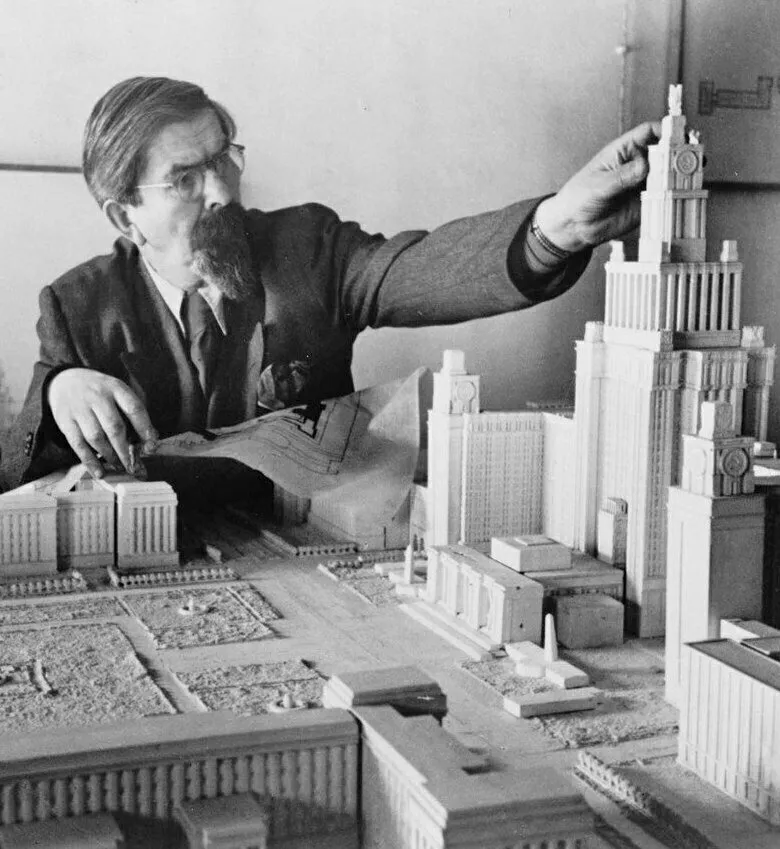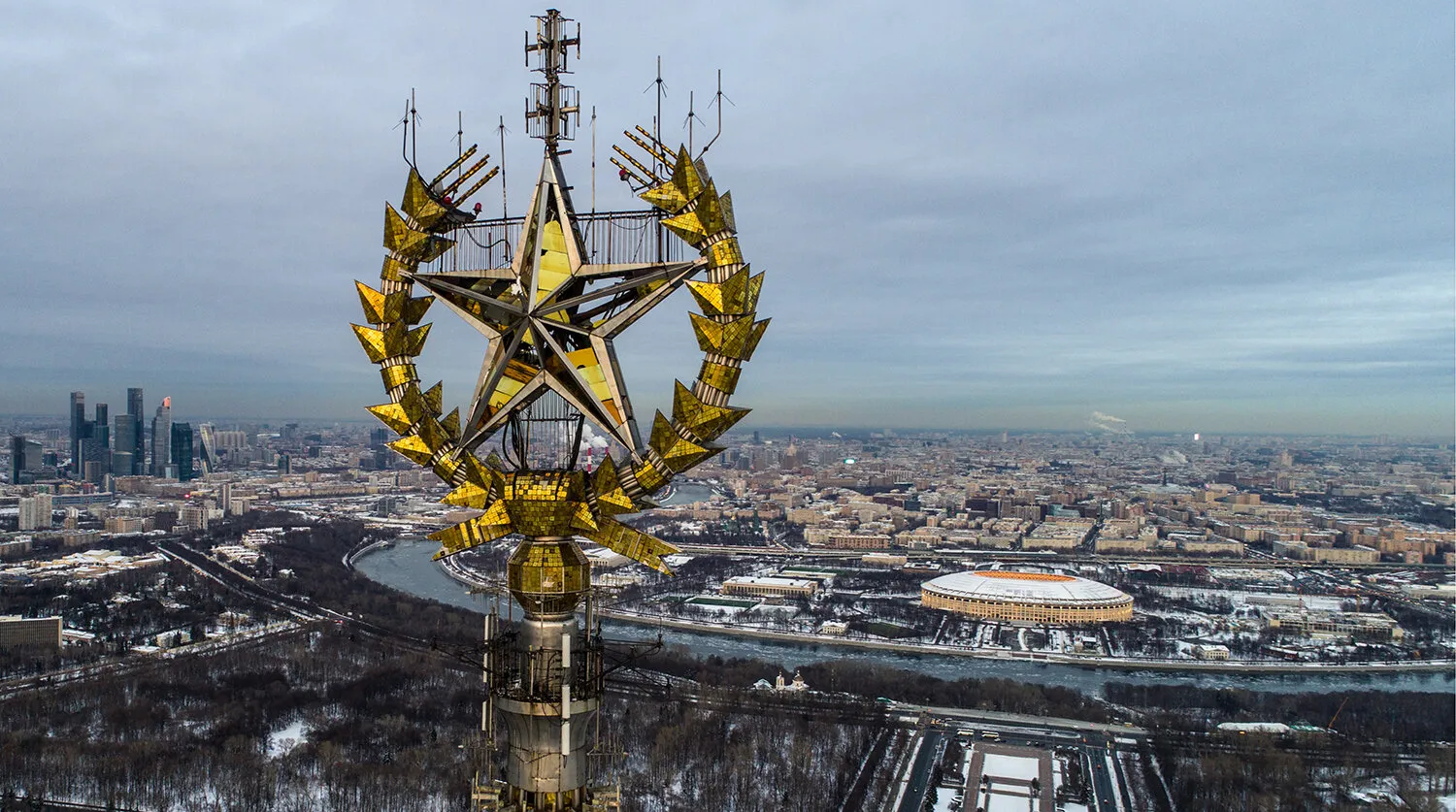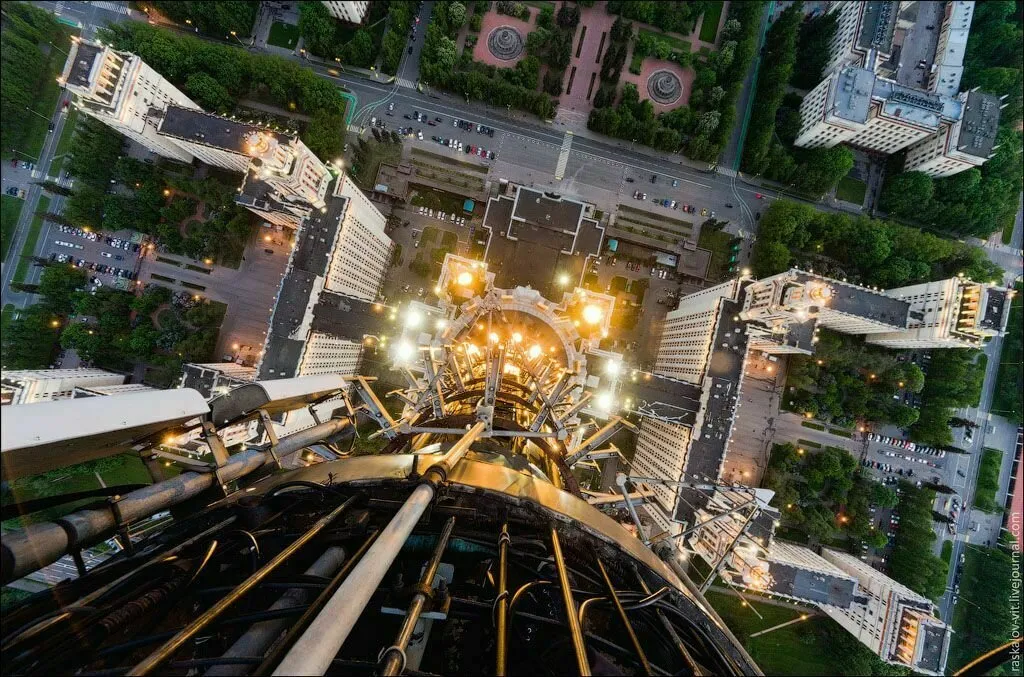There can be your advertisement
300x150
Main Building of Moscow State University: University or Skyscraper with Surprises?
Architectural features and hidden details
If buildings could talk, the main building of Moscow State University would surely say: "Look at me, I'm an era!" This colossal structure rising on the Vorobyovy Hills is not just a university but a true monument to ambitions and engineering artistry. Built between 1949 and 1953, it became the tallest building in Europe for many years and continues to impress everyone who sees it for the first time. But what lies behind the facade of this Stalinist masterpiece?
Who was the architect?
The main building of Moscow State University was designed by Lev Rudnev—one of the leading architects of the Stalinist era. However, it's important to note that the project was a collective effort: an entire team of architects, engineers, and even artists worked on it. Rudnev led the project but was supported by master craftsmen such as Sergei Chernyshov and Pavel Abrasimov.
Originally, the project was entrusted to Boris Iofan, a famous architect who had worked on the Palace of Soviets project. However, his plan to place the building at the very edge of the Vorobyovy Hills raised serious concerns due to the risk of landslides. As a result, leadership handed it over to Rudnev, and the building was moved 800 meters away from the cliff. Yes, this is one case where it's better to step back slightly than risk everything.
 Photo: img.gazeta.ru
Photo: img.gazeta.ruBuilding in Numbers and Facts
The main building of Moscow State University is not just one structure but an entire architectural ensemble. The central tower, crowned with a 58-meter spire, has 36 floors and reaches a total height of 235 meters. Two wings extend on either side of the tower, each connected to smaller buildings forming a grand courtyard. The complex includes over 33 kilometers of corridors and more than 5000 rooms. Yes, it's easy to get lost in such a building even with GPS.
Originally, the building was designed as a university town, combining everything necessary for living and studying. It includes:
- Classrooms and lecture halls, including the famous Hall No. 01, which can accommodate over 1500 students.
- Scientific laboratories—where world-class research was (and still is) conducted.
- A library that occupies several floors.
- Dormitories for students and faculty—around 6000 people can live right inside the building.
- A cafeteria that can feed an army of students.
- Post office, pharmacy, shops, and even a cinema.
It is said that the underground part of the building contains a bomb shelter and even underground tunnels connecting the buildings. Officially, this is not confirmed, but rumors only intensify interest.
Unique Details
Now, here are some curious facts that make this building special:
The Star on the Spire. This 12-ton, five-pointed star was installed using complex engineering techniques. It is covered with gold sheets, and inside there is a small room. Imagine: sitting in the star at nearly 240 meters high—romantic!
Secret Decorations. The building’s facades are adorned with reliefs, sculptures, and ornamental work reflecting the spirit of the time. You can find figures of students, workers, wheat ears, and hammers—all symbols associated with the Soviet Union.
Records. Until 1990, the main building of Moscow State University was the tallest building in Europe, until it was surpassed by the Messeturm tower in Frankfurt. Inside the building itself is another record—the largest Foucault pendulum, demonstrating Earth’s rotation.
Legends. There is a story that in the central tower of the building, there was allegedly a laboratory working on secret projects. Reality or fiction? Unfortunately, it's now hard to know for sure.
 Photo: img.gazeta.ru
Photo: img.gazeta.ru Photo: img.gazeta.ru
Photo: img.gazeta.ruWhat Inspired Such Magnificence?
Stalinist skyscrapers, to which the main building of Moscow State University belongs, were built not only as architectural landmarks but also as ideological manifestos. Each was meant to tell the world: "We can do anything!" The main building of Moscow State University became the most ambitious among these projects. Advanced technologies and materials were used, including concrete capable of withstanding extreme conditions.
It's interesting that Moscow State University inspired architects in other countries. For example, the famous Palace of Culture and Science in Warsaw was built in the style of our university. Even in China, there are buildings clearly inspired by Stalinist architecture.
Why Is It Still Important Today?
Today, the main building of Moscow State University is not only an educational institution but also a symbol of Moscow. It reminds us that architecture is not just about aesthetics but also about ideas. This university embodies the ambitions of an entire country, a desire for knowledge and greatness.
So, the next time you admire this monumental structure, think: isn’t it proof that great projects are possible—even if they seem beyond human capabilities? And if you ever find yourself inside, don’t forget to bring a map—or a guide—to avoid getting lost.
Cover: img.gazeta.ru
More articles:
 7 Cool Ideas We Spotted in a Transformed Brezhnev-Era Apartment
7 Cool Ideas We Spotted in a Transformed Brezhnev-Era Apartment Colors in Interior Design 2025: What Will Be Trendy and How to Use Them at Home
Colors in Interior Design 2025: What Will Be Trendy and How to Use Them at Home What to Watch for Holidays Besides 'Irony of Fate'
What to Watch for Holidays Besides 'Irony of Fate' Storage in Compact Living: 7 Worthwhile Ideas
Storage in Compact Living: 7 Worthwhile Ideas Agata Muceniece's Dream Kitchen: How to Create a Space You Want to Live In
Agata Muceniece's Dream Kitchen: How to Create a Space You Want to Live In Cool renovation of a Pik apartment in a euro-trash 61 sqm
Cool renovation of a Pik apartment in a euro-trash 61 sqm The Main Trend of 2025: Why Brown Became the New Black and What to Do About It
The Main Trend of 2025: Why Brown Became the New Black and What to Do About It 7 Beautiful Solutions Inspired by Designer Interiors
7 Beautiful Solutions Inspired by Designer Interiors